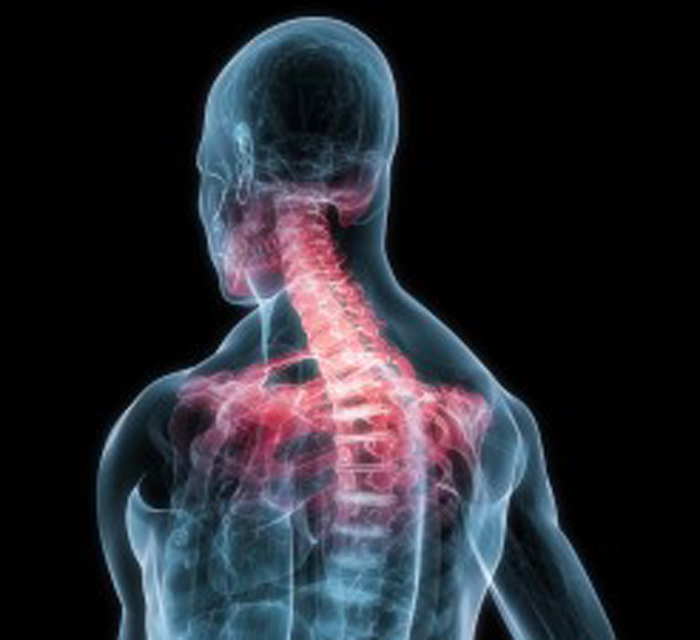A Diagnosis-based Clinical Decision Rule For Spinal Pain Part 2: Review Of The Literature
SOURCE: Chiropractic & Osteopathy 2008 (Aug 11); 16: 7
Donald R Murphy, Eric L Hurwitz, and Craig F Nelson
Rhode Island Spine Center,
Pawtucket, RI 02860, USA
BACKGROUND: Spinal pain is a common and often disabling problem. The research on various treatments for spinal pain has, for the most part, suggested that while several interventions have demonstrated mild to moderate short-term benefit, no single treatment has a major impact on either pain or disability. There is great need for more accurate diagnosis in patients with spinal pain. In a previous paper, the theoretical model of a diagnosis-based clinical decision rule was presented. The approach is designed to provide the clinician with a strategy for arriving at a specific working diagnosis from which treatment decisions can be made. It is based on three questions of diagnosis. In the current paper, the literature on the reliability and validity of the assessment procedures that are included in the diagnosis-based clinical decision rule is presented.
METHODS: The databases of Medline, Cinahl, Embase and MANTIS were searched for studies that evaluated the reliability and validity of clinic-based diagnostic procedures for patients with spinal pain that have relevance for questions 2 (which investigates characteristics of the pain source) and 3 (which investigates perpetuating factors of the pain experience). In addition, the reference list of identified papers and authors’ libraries were searched.
RESULTS: A total of 1769 articles were retrieved, of which 138 were deemed relevant. Fifty-one studies related to reliability and 76 related to validity. One study evaluated both reliability and validity.
CONCLUSION: Regarding some aspects of the DBCDR, there are a number of studies that allow the clinician to have a reasonable degree of confidence in his or her findings. This is particularly true for centralization signs, neurodynamic signs and psychological perpetuating factors. There are other aspects of the DBCDR in which a lesser degree of confidence is warranted, and in which further research is needed.
From the FULL TEXT Article:
Introduction
Accurate diagnosis or classification of patients with spinal pain has been identified as a research priority [1]. We presented in Part 1 the theoretical model of an approach to diagnosis in patients with spinal pain [2]. This approach incorporated the various factors that have been found, or in some cases theorized, to be of importance in the generation and perpetuation of neck or back pain into an organized scheme upon which a management strategy can be based. The authors termed this approach a diagnosis-based clinical decision rule (DBCDR). The DBCDR is not a clinical prediction rule. It is an attempt to identify aspects of the clinical picture in each patient that are relevant to the perpetuation of pain and disability so that these factors can be addressed with interventions designed to improve them. The purpose of this paper is to review the literature on the methods involved in the DBCDR regarding reliability and validity and to identify those areas in which the literature is currently lacking.
The Three Essential Questions of Diagnosis
The DBCDR is based on what the authors refer to as the 3 essential questions of diagnosis [2]. The answers to these questions supply the clinician with the most important information that is required to develop an individualized diagnosis from which a management strategy can be derived.
There are more articles like this @ our:
Low Back Pain Page and the:
The 3 questions are:
1. Are the symptoms with which the patient is presenting reflective of a visceral disorder or a serious or potentially life-threatening disease? In seeking the answer to this question, history and examination and, when indicated, special tests, are used to detect or raise the level of suspicion for the presence of pathological disorders for which spinal pain may be the first or only symptom. Some examples are gastrointestinal or genitourinary disorders, fracture, infection and malignancy. Potentially serious or life-threatening conditions are sometimes referred to as “red flags” [3].
2. From where is the patient’s pain arising? In seeking the answer to this question, four signs are searched for:
(1) centralization signs,
(2) segmental pain provocation signs,
(3) neurodynamic signs, and
(4) muscle palpation signs.
3. What has gone wrong with this person as a whole that would cause the pain experience to develop and persist? In seeking the answer to this question, perpetuating factors are searched for:
Read the rest of this Full Text article now!





Leave A Comment